This article was co-authored by wikiHow Staff. Our trained team of editors and researchers validate articles for accuracy and comprehensiveness. wikiHow's Content Management Team carefully monitors the work from our editorial staff to ensure that each article is backed by trusted research and meets our high quality standards.
The wikiHow Video Team also followed the article's instructions and verified that they work.
This article has been viewed 46,223 times.
Learn more...
Syringes should not be reused if it can be helped. Even a single use will dirty the needle and dull it, making it less effective at penetrating the skin. Dull syringes can cause a great deal of damage to your veins.[1] Rinse your syringes by drawing cool water into them and ejecting it out through the needle. Disinfect syringes by rinsing it in bleach for at least 30 seconds. Sharpen used syringes on a sharpening surface, like a carbide stone or matchbox, to prevent damage to your veins.
Steps
Rinsing the Syringe
-
1Clean syringes immediately before and after using them. This may seem like a troublesome routine. However, cleaning syringes right before and after using them will greatly reduce the chances of catching a blood borne disease, like hepatitis or HIV. This will also prevent blood from hardening in the syringe.[2]
-
2Prepare your disinfecting area. Kitchens work best for cleaning syringes, though bathrooms are also suitable in a pinch. Clean the entire area where you'll be disinfecting syringes thoroughly with a strong cleaner, like bleach.
- Avoid disinfecting syringes in dirty areas. Doing so could result in your bacteria or viruses being transferred from the work area to disinfected syringes.[3]
Advertisement -
3Wash your hands thoroughly. Wet your hands in cool water. Apply a household soap to them. Rub your hands together to lather up the soap. Pay close attention to the spaces between your fingers and your fingernails. Bacteria often hides in these places. Rinse the soap from your hands with cool water.[4]
- Wash your hands for at least 20 seconds. A quick rinse will not effectively remove germs from your hands.[5]
-
4Fill one small container with bleach and cold water. If you don't have suitable containers, use a clean cap or cup. The containers should be large enough to hold at least a full syringe of fluid. If your sink is flat bottomed, you may want to place these containers in the sink in case of spillage.[6]
- If you don't have bleach, fill the container with high percentage isopropyl alcohol (90% or higher recommended) or hydrogen peroxide.[7]
-
5Draw water into and eject it out of the syringe. Place the tip of your needle in the water. Draw back the plunger to fill the barrel of the syringe. Lightly shake the syringe. Position the needle over the drain and press the plunger to eject the water. Do this several times.
- Never reuse fluid that has been inside a syringe. Fluid used to rinse or disinfect syringes should be disposed down a drain.[8]
- Be careful when handling syringes, especially those that have been used before. Pricking yourself with a dirty needle may cause illness or infection.
-
6Pour water into the syringe barrel and eject it, alternatively. Pull the plunger back until it comes free of the syringe. Fill the barrel with cool water from the open plunger end. Reinsert the plunger and press it down to eject water through the needle and down the drain. Do this at least 3 times.
- When the barrel is full of water, gently shake the syringe and tap the barrel against the palm of your hand. This will help loosen up hardened blood.[9]
Disinfecting the Syringe
-
1Draw bleach into the syringe. Insert your needle into the container with undiluted bleach. Draw enough bleach into the syringe until the barrel is roughly half full. Do not overfill the syringe. Then pull the plunger as far back as possible without removing it.[10]
-
2Shake the syringe. Lightly shake the syringe. Tap the barrel lightly against the palm of your hand. Do this for at least 30 seconds. The bleach needs at least this much time to disinfect resilient viruses, like hepatitis C and HIV.[11]
-
3Rinse the syringe with bleach at least 3 times. Position the syringe over a drain and press in the plunger to eject the bleach down the drain. Never reuse bleach when cleaning syringes. Repeat the process of drawing fresh bleach into the syringe, shaking it for 30 seconds, and ejecting the used bleach down the drain two more times.[12]
-
4Flush the syringe several times with cool water. The water in your container has been contaminated by the dirty needle. Empty the water down the drain and clean the container with a strong cleaner, like bleach. Rinse the container several times with cool water. Refill it with water. To flush the syringe:[13]
- Draw water into the barrel until it is half full.
- Remove the needle from the water.
- Extend the plunger as far back as possible without detaching it.
- Shake the syringe gently.
- Press the plunger to eject the water. Do not reuse water. Repeat this at least three times.[14]
-
5Clean up your disinfecting area. Empty the contents of both containers down the drain. Use fresh, undiluted bleach to clean the containers and the sink. Rinse bleach thoroughly with cool water. Dry the containers with a towel or allow them to air dry, then put them away.[15]
Sharpening Needles
-
1Gather your supplies. A magnifying glass, especially those used by jewelers or cosmetologists, will help you inspect the condition of the needle. Arkansas or carbide sharpening stones work best as a sharpening surface and can be bought at medical supply stores. You'll also need a clean, small container for water, like a cup.
- If a sharpening stone is unavailable, you can use the striking surface of a matchbox as the sharpening surface.
- The magnifying glasses used by jewelers and cosmetologists can sometimes be found at flea markets.[16]
-
2Fill a clean needle with clean water. Only sharpen cleaned needles. Fill your clean, small container with cool water. Insert the tip of your needle into the water and draw back the plunger to fill the barrel halfway. Remove the needle from the water.
-
3Drag the needle backwards against the sharpening surface. Position the needle at one end of the surface so its angled part is flat against the surface. With extremely light pressure, pull the tip of the needle backwards along the surface until you reach the opposite end.
- Take care not to pull the plunger of the syringe while sharpening. Doing so might draw dangerous fragments created by sharpening into the barrel.
- Most needles sharpen in 2 to 3 passes when pulled along the entire length of a sharpening stone or the striking strip of a matchbox.
- Pressing too hard on the needle when sharpening could damage the needle. Syringes with damaged needles should be disposed of in an appropriate container.[17]
-
4Repeat this motion a couple of times. After pulling the needle the length of the surface, lift the needle and repeat this process at least 2 more times. Flip the needle so the angled side is facing up and the tip is against the surface. Pull the needle against the surface once like this to finish sharpening.
- Use a magnifying glass, if you have one, to inspect the needle point. If you notice roughness, pass the needle a few more times along the sharpening surface.[18]
-
5Clean the syringe thoroughly. Press the plunger to completely eject the water in the barrel. Wrap an alcohol swab around the base of the needle and pull the needle through the swab. Throw the swab away. Repeat this process with a fresh swab to finish cleaning your sharpened needle.
- Sharpening a syringe creates small, sometimes invisible needle fragments. If injected, these can be deadly. Be thorough when cleaning sharpened needles.
- Wet sharpened needles with sterilized water before using them. This will lubricate the needle, allowing for better penetration.
Warnings
- Improper cleaning, handling, or sharpening of needles could result in serious illness, infection, or physical harm.⧼thumbs_response⧽
- Never share needles. Even cleaned needles sometimes carry a risk of infection, especially if improperly cleaned.⧼thumbs_response⧽
- Damaged needles can cause serious harm to your veins and your general physical health as well.⧼thumbs_response⧽
- Injected drugs carry a high risk of infection from dangerous blood borne diseases, like hepatitis C and HIV, as well as physical problems, like vein scarring or collapse.⧼thumbs_response⧽
Things You'll Need
Rinsing the Syringe
- Bleach
- Hand soap
- Small container (x2, like a cup)
Sharpening the Syringe
- Alcohol swabs
- Arkansas or Carbide sharpening stone (or matchbox)
- Clean syringe
- Magnifying glass (recommended)
References
- ↑ https://www.heroinhelper.com/user/admin/sharpening.shtml
- ↑ http://www.thewellproject.org/hiv-information/cleaning-equipment-injecting-drugs
- ↑ https://www.heroinhelper.com/user/admin/bleaching.shtml
- ↑ https://www.heroinhelper.com/user/admin/bleaching.shtml
- ↑ https://www.cdc.gov/features/handwashing/
- ↑ http://www.thewellproject.org/hiv-information/cleaning-equipment-injecting-drugs
- ↑ http://harmreduction.org/issues/syringe-access/tools-best-practices/manuals-and-best-practice-documents/sap-manual-appendix/appendix-g/
- ↑ https://www.heroinhelper.com/user/admin/bleaching.shtml
- ↑ http://www.thewellproject.org/hiv-information/cleaning-equipment-injecting-drugs
- ↑ https://www.heroinhelper.com/user/admin/bleaching.shtml
- ↑ http://www.thewellproject.org/hiv-information/cleaning-equipment-injecting-drugs
- ↑ http://www.thewellproject.org/hiv-information/cleaning-equipment-injecting-drugs
- ↑ https://www.heroinhelper.com/user/admin/bleaching.shtml
- ↑ http://www.thewellproject.org/hiv-information/cleaning-equipment-injecting-drugs
- ↑ https://www.heroinhelper.com/user/admin/bleaching.shtml
- ↑ https://www.heroinhelper.com/user/admin/sharpening.shtml
- ↑ https://www.heroinhelper.com/user/admin/sharpening.shtml
- ↑ https://www.heroinhelper.com/user/admin/sharpening.shtml
About This Article
To clean a syringe, fill a container with bleach and cold water. Place the tip of the needle into the container and draw back the plunger to fill the syringe. Shake the syringe before pressing the plunger to eject the bleach and water. Alternatively, to disinfect the syringe, draw undiluted bleach into the syringe until the barrel is half full. Then, pull the plunger all the way back and shake the syringe for 30 seconds. Repeat this process before flushing the syringe with cool water. For tips on how to prepare the disinfecting area, keep reading!
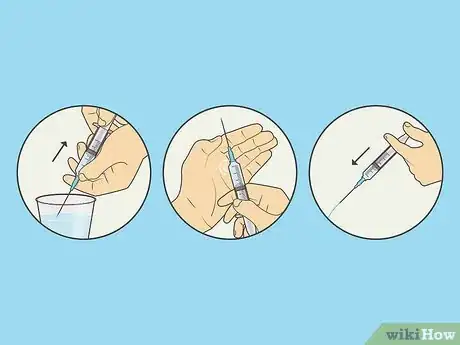

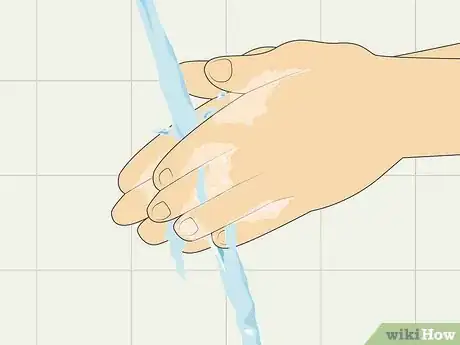
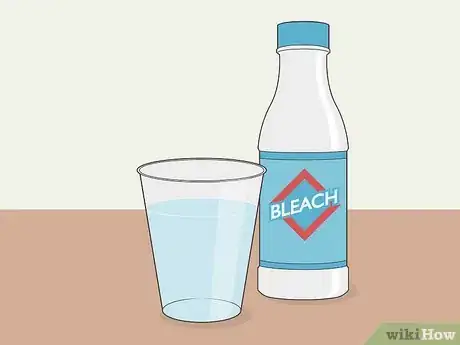
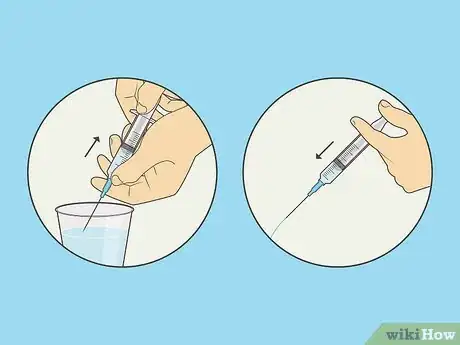
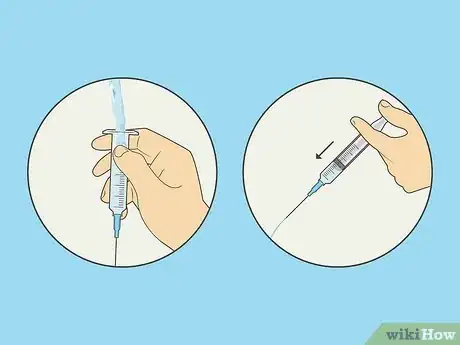

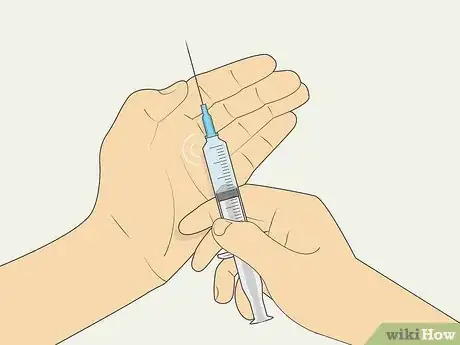


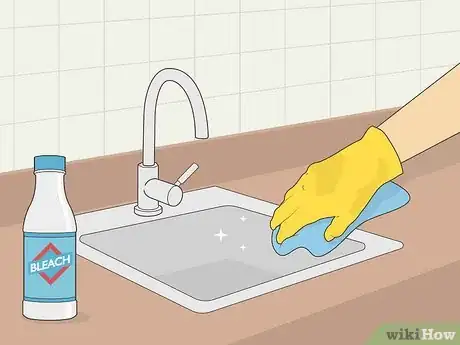
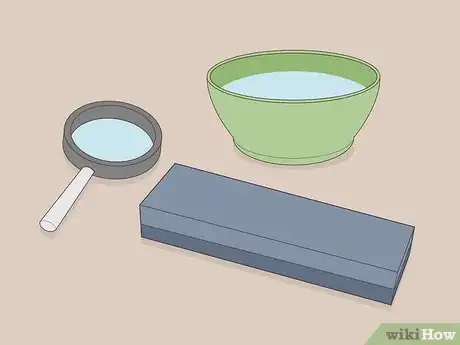
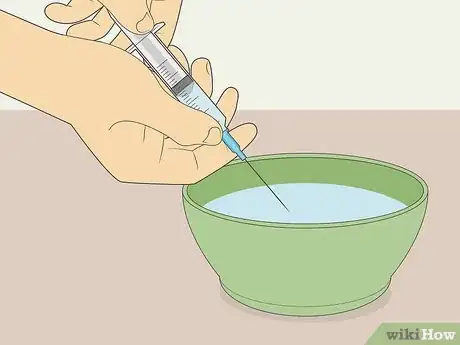
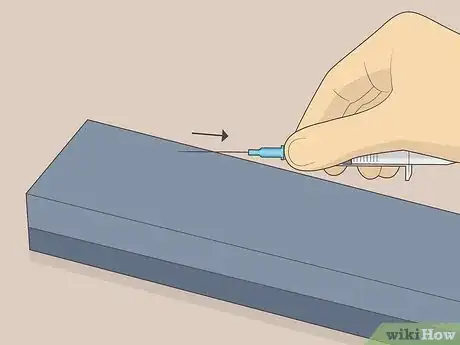
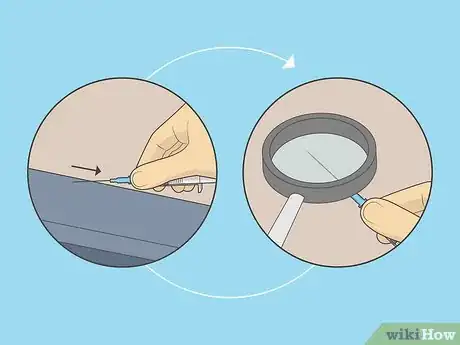
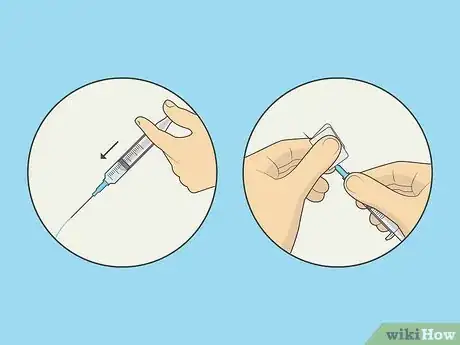
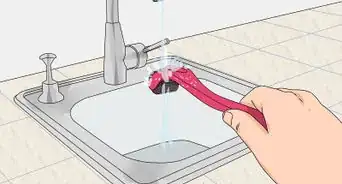



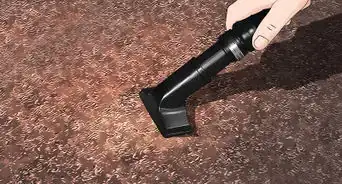

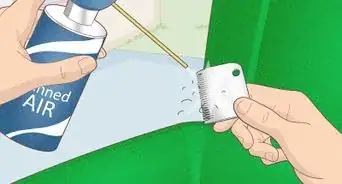
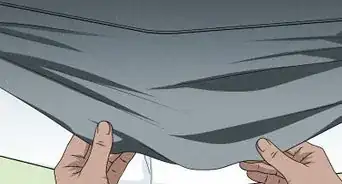
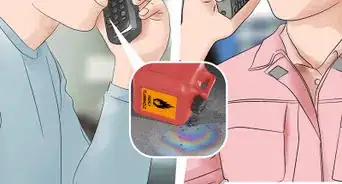







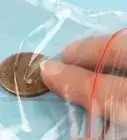
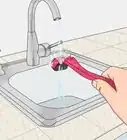





































Medical Disclaimer
The content of this article is not intended to be a substitute for professional medical advice, examination, diagnosis, or treatment. You should always contact your doctor or other qualified healthcare professional before starting, changing, or stopping any kind of health treatment.
Read More...